Winter is a difficult time of year for birds, the days are short, the nights are cold and food is more difficult to find.
Birds need to make the most of the few daylight hours and eat as much as they can so that they have the energy to survive through the long winter nights.
Insect eating birds find it hard as most insects are hibernating, and grubs and larvae are buried deep in the ground. When it is very cold, frozen soil, snow and ice make it even harder harder to find food.

Robins mainly feed on small invertebrates, which they find in the soil. You can find them hopping about around your spade when digging as they look out for tasty treats that have been uncovered! In winter, they will hunt through the leaf litter and under bushes, where the ground is sheltered from frosts. They will also eat berries and seeds if they can find them.
Since they have a wide diet, they can be easily attracted into the garden. As ground feeders, they will be choose feeding trays and bird tables rather than hanging feeders. Make a mixture of bird seed, sunflower hearts and mealworms, sprinkle it out on a tray and wait for the robins to arrive. Since their preferred diet is invertebrates, they are big fans of mealworms. If you soak the dried mealworms in water (they are dried when you buy packs in the shops) before putting them on the bird table, it will give the robin some moisture too- important when natural water in puddles and streams is frozen.
Blue Tits feed on insects, caterpillars, seeds and nuts and will visit well stocked feeders, trays and tables. In winter, family flocks join up with other tits as they search for food. A garden with four or five blue tits at a feeder at any one time may be feeding 20 or more. Great Tits and Coal Tits also eat insects, seeds and nuts and will often take whole peanuts from feeders and sit on a nearby branch to eat before returning for more. Coal Tits will often take seed and nuts away to store for later. In winter Great Tits and Coal Tits can join flocks with Blue Tits and search for food sources together.
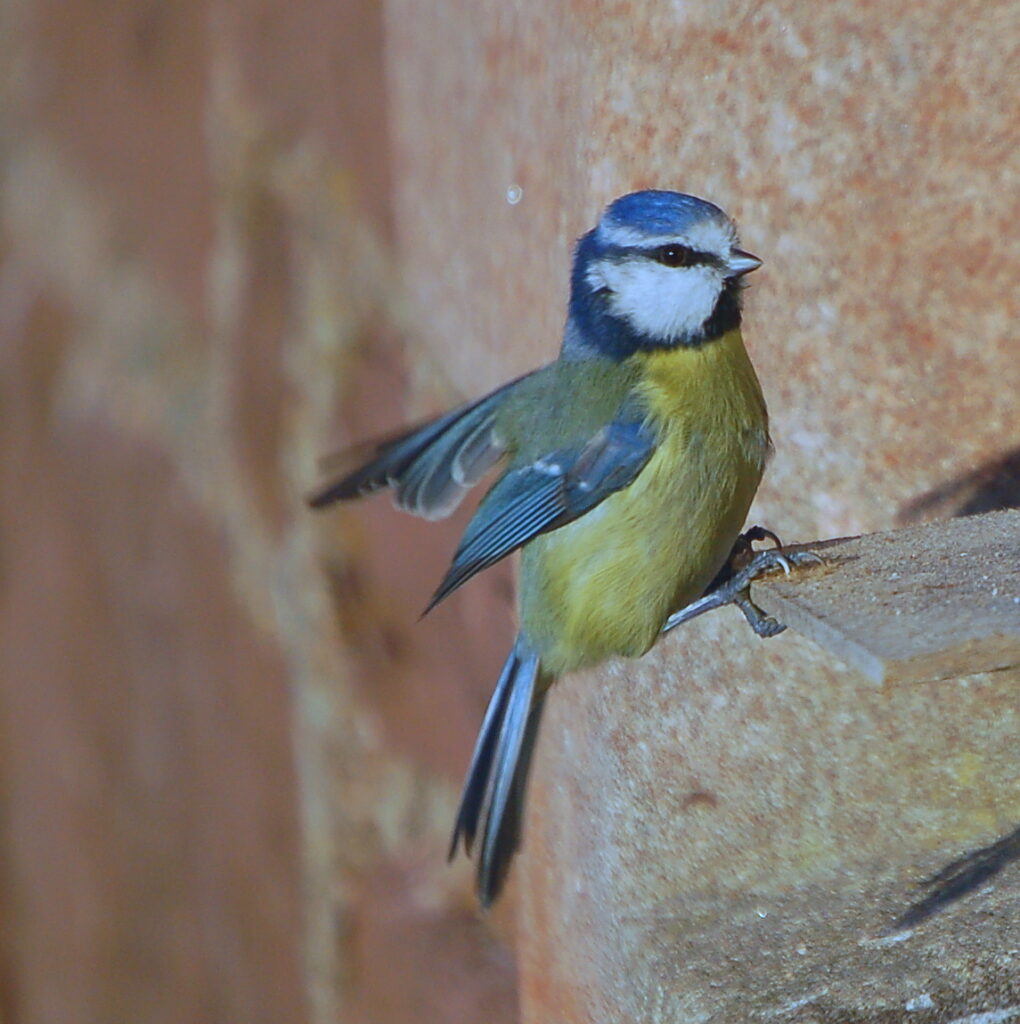
Blue Tit 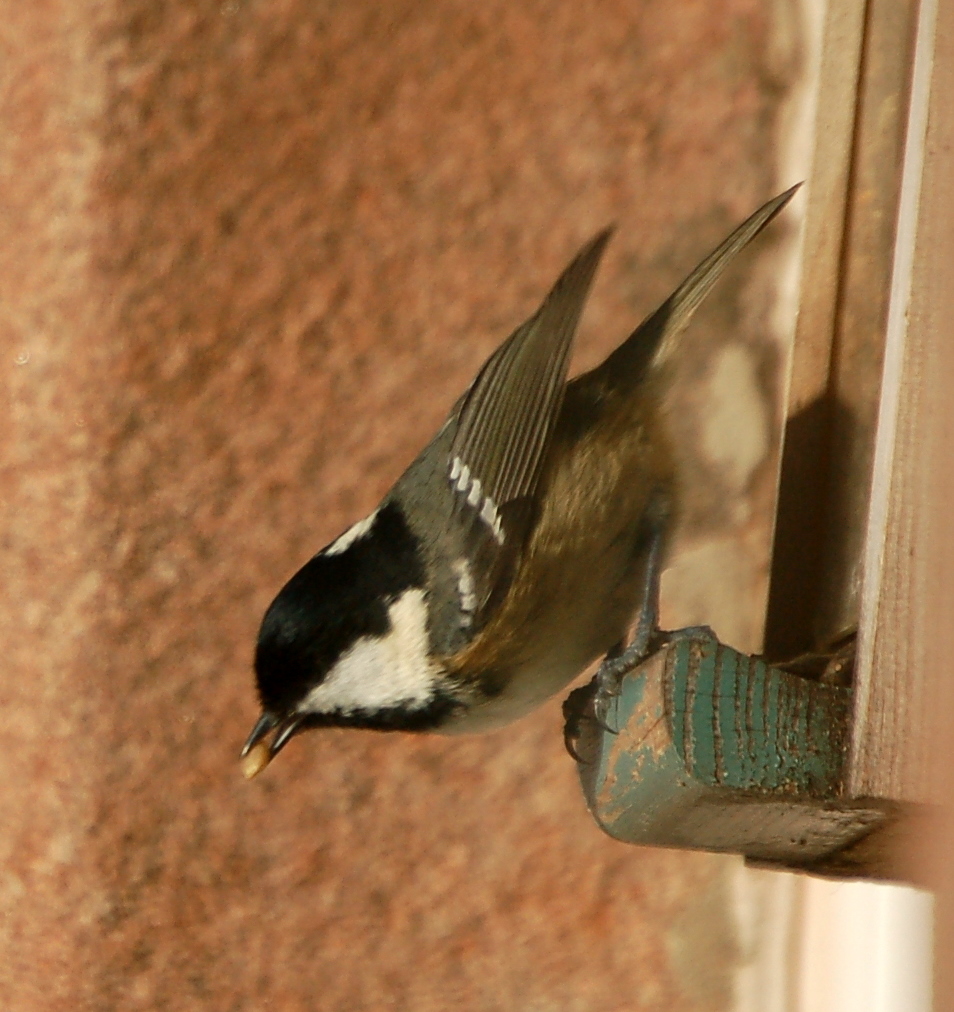
Coal Tit 
Great Tit

Blackbirds are not fussy eaters and will eat a variety of insects and worms, but they also eat berries and fruit when in season. Like robins, they are ground feeders so will come to low trays and tables. They will poke about through the undergrowth turning over fallen leaves in search of something to eat. When looking for worms, blackbirds rely on keen eyesight and hearing. They are able to spot a worm’s tail sticking out of the soil and can even hear worms when they move under the surface! They like mealworms, waxworms and dog food ( a good substitute for mealworms!) as well uncooked oats.
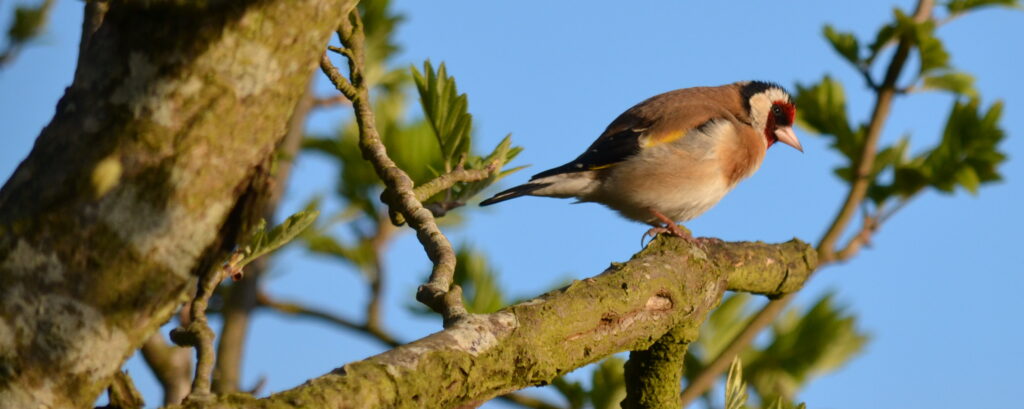
Goldfinches are becoming much more common garden visitors. In the summer they eat seeds and insects and their long fine beaks allow them to get at the more inaccessible seeds from pine, thistles and teasels. They are migratory birds, and in winter many UK goldfinches migrate as far south as Spain. Those that remain can be attracted into the winter garden by planting teasel in summer and leaving the flower heads to set seed, so that goldfinches have a winter food source. They are also particularly fond of niger seeds and will ready eat from hanging feeders.
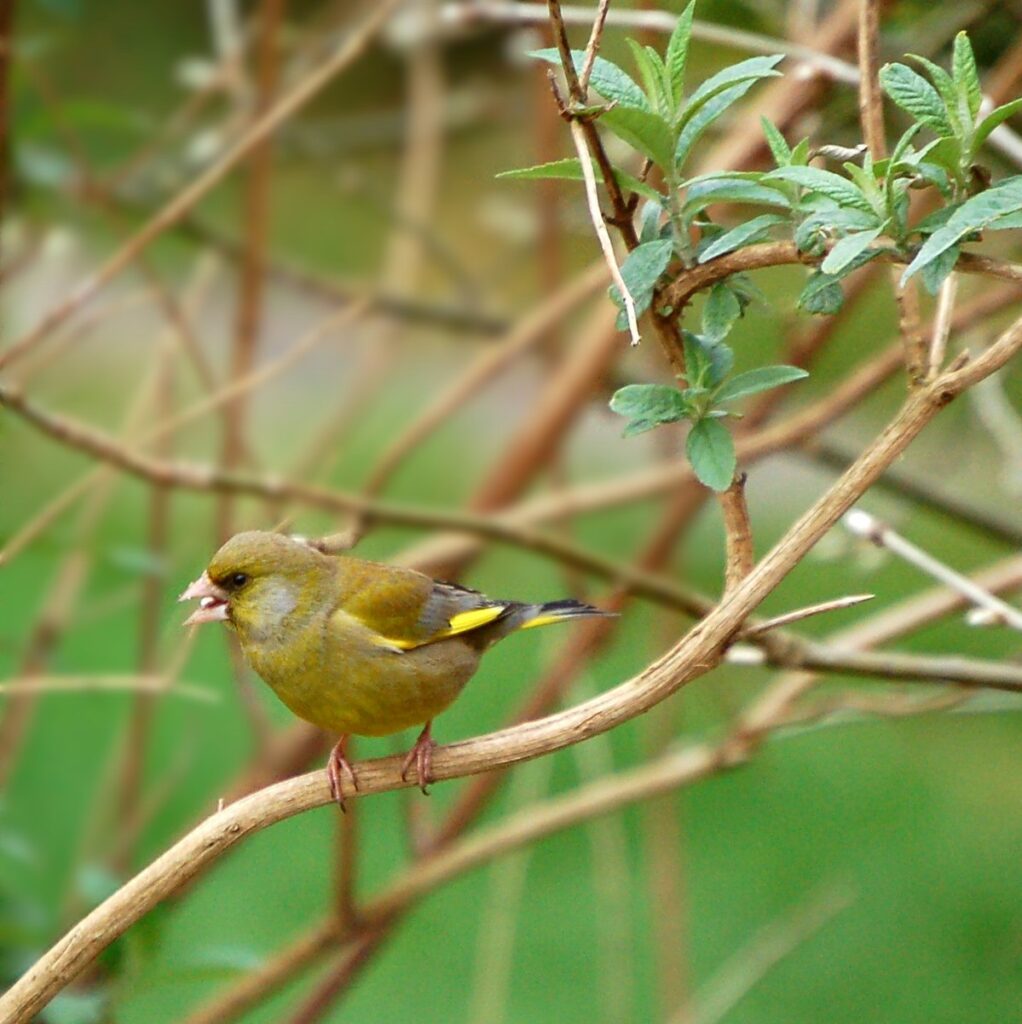
In summer Greenfinches feed on insects and in winter, they are particularly fond of black sunflower seeds. A recent drop in population numbers is thought to be due to diseas which can be transmitted at feeders, so it is particularly important to make sure that feeders are kept clean. Greenfinches can be quite bossy at bird feeders, often chasing other birds away from their food!

Chaffinches also eat seeds and insects in the summer and, while they can be attracted into the garden, will not eat from feeders. Chaffinches prefer to hop about under the bird table or under the hedge. Try leaving a small pile of leaves and twigs under the bird table. This provides a sheltered spot for insects and gives the chaffinches somewhere to poke about for food. Putting a few sunflower seeds in a tray or on a low table also helps chaffinches.
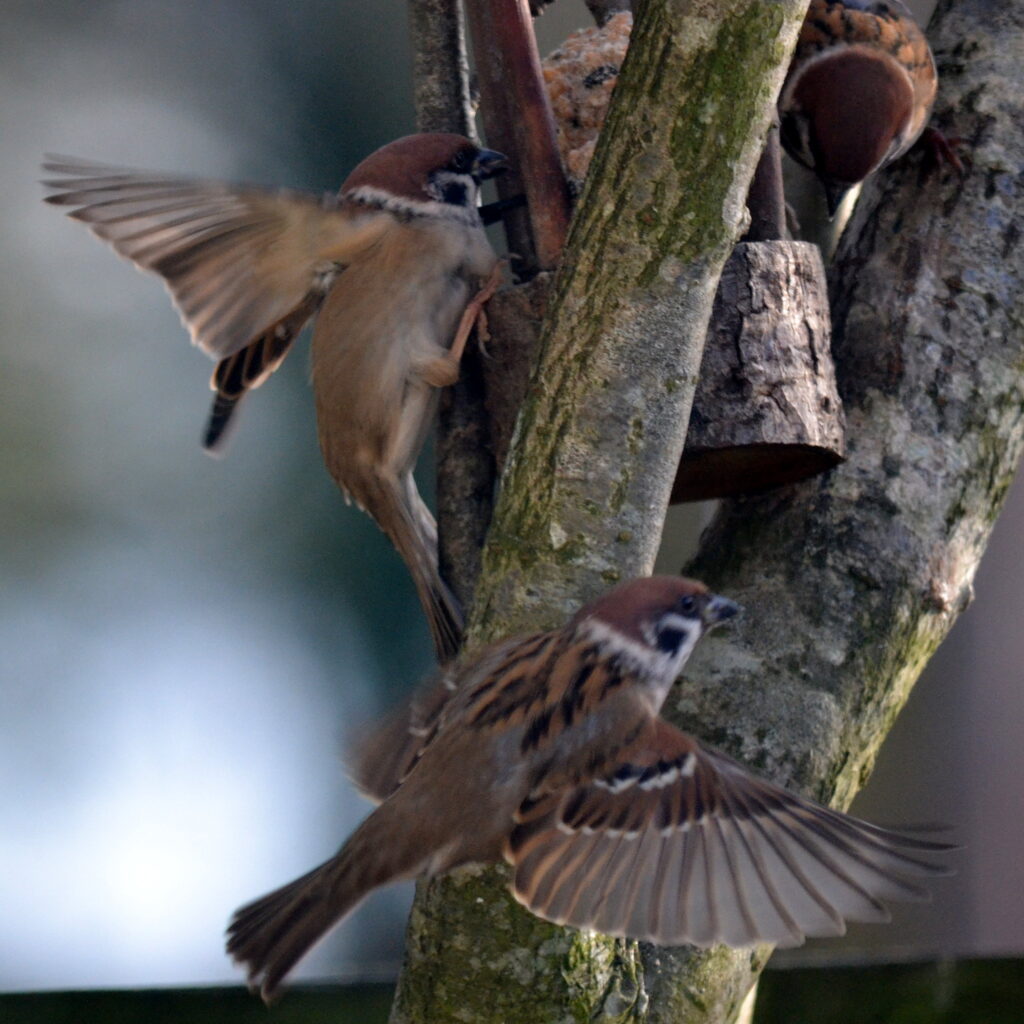
House Sparrows are excellent scavengers and will happily feed on scraps, allowing them to populate all landscapes, from the centre of cities to farmland and open countryside. It is a species vanishing from the centre of many cities but is still common elsewhere.
The Tree Sparrow is smaller and shier than the house sparrow but will readily take seeds and scraps from bird tables, particularly if they are sited next to hedges, which provide cover for them to quickly retreat into.
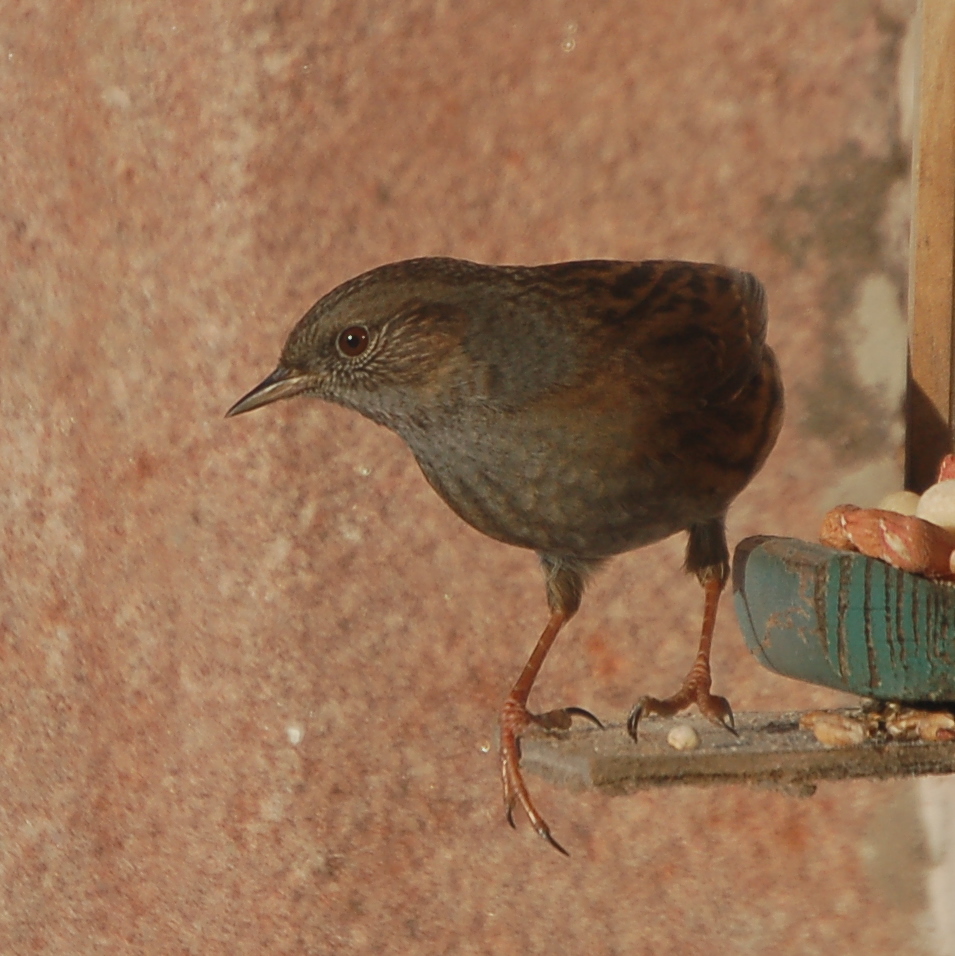
Dunnocks eat insects, spiders, worms and seeds. Like chaffinches, robins and blackbirds, they prefer to poke around on the ground in search of food and can often be seen underneath feeders and tables hoovering up the seeds scattered by other feeding birds
Buying feed just for the birds can be expensive. So what about sharing your leftovers? These tips are from RSPB website.
Many of your kitchen scraps and Christmas leftovers make ideal snacks for birds visiting your garden and can help them get the food they need to survive. Here’s a quick guide to what you can put out:
- Fat – fat from cuts of meat (if it comes from only unsalted varieties) can be put out in large pieces, from which birds such as tits can remove morsels. Make sure that these are well anchored to prevent large birds flying away with the whole piece.
- Roast potatoes – cold and opened up, these will be eaten by most garden birds.
- Vegetables – cold Brussels, parsnips or carrots will be eaten by starlings and other birds.
- Fruit – excess or bruised apples, pears and other fruit are very popular with all thrushes, tits, robins and starlings. Cut them up and leave them on the bird table or on the ground. Or hang them from a branch or a bird table for tits.
- Pastry – cooked or uncooked is excellent, especially if it has been made with real fats.
- Cheese – Hard bits of cheese are a favourite with robins, dunnocks, blackbirds and song thrushes. It will also help wrens if placed under hedgerows and other areas in your garden where you have noticed them feeding. Avoid feeding them very strong or blue cheeses.
- Dried fruits – raisins, sultanas and currants are particularly enjoyed by blackbirds, song thrushes and robins.
- Biscuits and cake – Stale cake and broken pieces of biscuits from the bottom of the tin are high in fat and ideal for birds in the winter.
But DO NOT put out salty foods. Birds can’t digest salt and it will damage their nervous systems. And if you are leaving food on trays or a bird table, only leave as much as will be eaten in one day – otherwise you may attract unwanted visitors, such as mice and rats.
